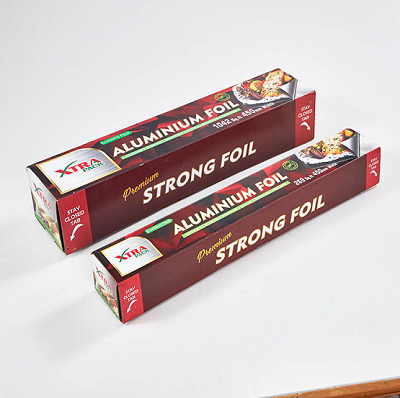We are committed to food packaging PVC cling film, PE cling film,stretch wrap, aluminum foil and other disposal food packing film/foil.

Language
>Microwavable Aluminum foil has become a popular choice for food preparation due to its convenience and versatility. However, to ensure its safe and effective use in microwaves, users should follow specific guidelines. This article aims to provide essential precautions and recommendations to maximize the benefits of microwavable Aluminum Foil while maintaining safety standards.

Use Microwavable-Safe Labels:
Ensure that the aluminum foil is labeled as "microwave-safe." This designation indicates that the foil is specifically designed and tested for use in microwave ovens without posing safety risks.
Check for Microwave-Safe Symbols:
Look for symbols or icons on the packaging that indicate the aluminum foil's compatibility with microwave ovens. These symbols often include images of a microwave or the words "microwave-safe."
Avoid Sharp Edges and Creases:
Inspect the aluminum foil before use to ensure it does not have sharp edges or creases. Sharp edges can pose injury risks, and creases may lead to uneven heating or sparks in the microwave.
Do Not Overlap or Crumple:
Avoid overlapping or crumpling the aluminum foil when using it in the microwave. Overlapping can cause uneven heating, while crumpling may result in sparks or damage to the foil.
Use in Small Quantities:
Use microwavable aluminum foil in small quantities to avoid potential hazards. Excessive amounts may obstruct the flow of microwaves, leading to uneven heating or sparking.
Avoid Sharp Foods and Bones:
Refrain from using microwavable aluminum foil to cover sharp-edged foods or items with bones, as these can puncture the foil and create a safety risk.
Create Air Vents:
If wrapping food in microwavable aluminum foil is necessary, create small vents or openings to allow steam to escape. This prevents pressure build-up and reduces the risk of the foil overheating.
Avoid High-Acidity and Salty Foods:
Be cautious when using microwavable aluminum foil with high-acidity or salty foods. These can react with the foil and affect the taste of the food. Consider alternative containers for such items.
Regularly Inspect for Damage:
Regularly inspect microwavable aluminum foil for signs of damage, such as holes, tears, or discoloration. If any issues are detected, discard the foil to prevent potential safety hazards.